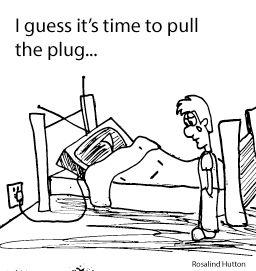Cable TV is dying, which is a very good thing. The 2010’s introduced a myriad of new ideas and lifestyle changes, especially within the realm of technology. One of its most underrated additions is the rise of streaming services.
With streaming services, one can enjoy the benefits of both the small and big screens with a litany of added conveniences, possibly even for a cheaper price. Of course, streaming as it exists right now is not the head-and-shoulders best option for everyone in America, but it is for many. This is evident by the slowly, but steadily, rising number of cord-cutters.
Adrian D. Garcia of Bankrate is projecting ”by the end of 2018, a total of 33 million U.S. adults will have cut the cord on cable, satellite or telco TV service to date — up 32.8 percent from 24.5 million in 2017.”
I only see this number rising as the years go by, and when it does, cable will be put to rest where it belongs.
Since money is the primary factor in most people’s decision, let us go ahead and discuss this element first. Cable TV subscribers pay upward of $100 a month on average. In comparison, subscribing to the “Big 3” streaming options, Hulu, Netflix and Amazon Prime Video costs around $40 if the most expensive packages are bought for the first two (Amazon has no tier system).
This leaves an extra $60 a month. To illustrate the point, we will decide to add HBO Now ($15), CBS All Access ($10), Showtime ($11), and Starz ($9). This brings our total monthly bill to around $85, which is certainly cheaper than a cable bill and still leaves the door open to add another service or two. In reality though, there is no need for someone to own all these subscriptions at once, and doing a bit of planning will help mitigate the cost even further.
Cord-cutting also helps with the headache of haggling with cable companies. Instead of calling and threatening to jump to another provider just to negotiate your way down to a half-way reasonable bill, you can simply sign up and cancel as you see fit with streaming services. There is no contract to sign, nor ridiculous “bundles” of channels to buy which space the desirable ones out to maximize profit.
Then, there is the convenience factor. In seconds, thousands of hours of content are available on every internet-connected device you own, and can be watched quite literally anywhere. These advantages are becoming more apparent to consumers at large, and as more of the Generation Z grows into adulthood and the Millennial cable loyalists give in, they will be the cause of cable’s downfall.
The economic ramifications, which are usually the most important ones, are already showing themselves. To showcase this, Shalini Ramachandran of the Wall Street Journal outlines a few of their effects. “Since the beginning of February, Charter has lost nearly $30 billion in market value, and AT&T has shed nearly $50 billion. Comcast’s market value has declined nearly $50 billion since late January,” Ramachandran explains.
There are a few obstacles holding progress back, though. Sports are extremely hard to watch live without some form of cable subscription. Programs’ live TV options like YouTube TV, Sling and PlayStation Vue offer very similar packages to their cable TV counterparts with less channels. A sound internet is also required to stream on multiple devices.
To make things worse, companies like Disney are seeing dollar signs with the cord-cutting trend and are starting their own stand-alone streaming products that will take their content away from existing services and fragment people’s options, potentially making things more expensive. These issues are why the death of cable is a bit slow at the moment, and why some are beginning to think it may never happen at all.
However, fiber optic internet will become the norm sooner than we think. I find it hard to believe many companies, which are not associated with the Mouse, have the staying power to make a profit off leaving Hulu or Netflix’s established platforms, and sports have to jump on the bandwagon sooner or later. There is no stopping this train now—us young’uns will see to it.
Cable TV is on its deathbed

Cable TV is on its deathbed
Donate to The Reflector
Your donation will support the student journalists of Mississippi State University. Your contribution will allow us to purchase equipment and cover our annual website hosting costs.




















































































